Abstract
Hepatocytes isolated from livers of fasted rats form little glycogen from glucose or lactate at concentrations below 20 mM. Glycogen is formed in substantial quantities at a glucose concentration of 60 mM. In the presence of 10 mM glucose, 20-30% as much glycogen as glucose is formed from fructose, sorbitol, or dihydroxyacetone. The addition of either glutamine, alanine, or asparagine stimulates the formation of glycogen from lactate 10- to 40-fold. The formation of glucose and glycogen is then about equal, and glycogen deposition in hepatocytes is similar to rates attained in vivo after fasted rats are refed. The amino acids stimulate 1.5- to 2-fold glycogen synthesis from fructose, and 2- to 4-fold synthesis from dihyDROXYACETONE. Ammonium chloride is about one-half as effective as amino acids in stimulating glycogen synthesis when glucose with lactate are substrates. It increased glycogen synthesis 25-50% from fructose but inhibited synthesis from dihydroxyacetone plus glucose.
Full text
PDF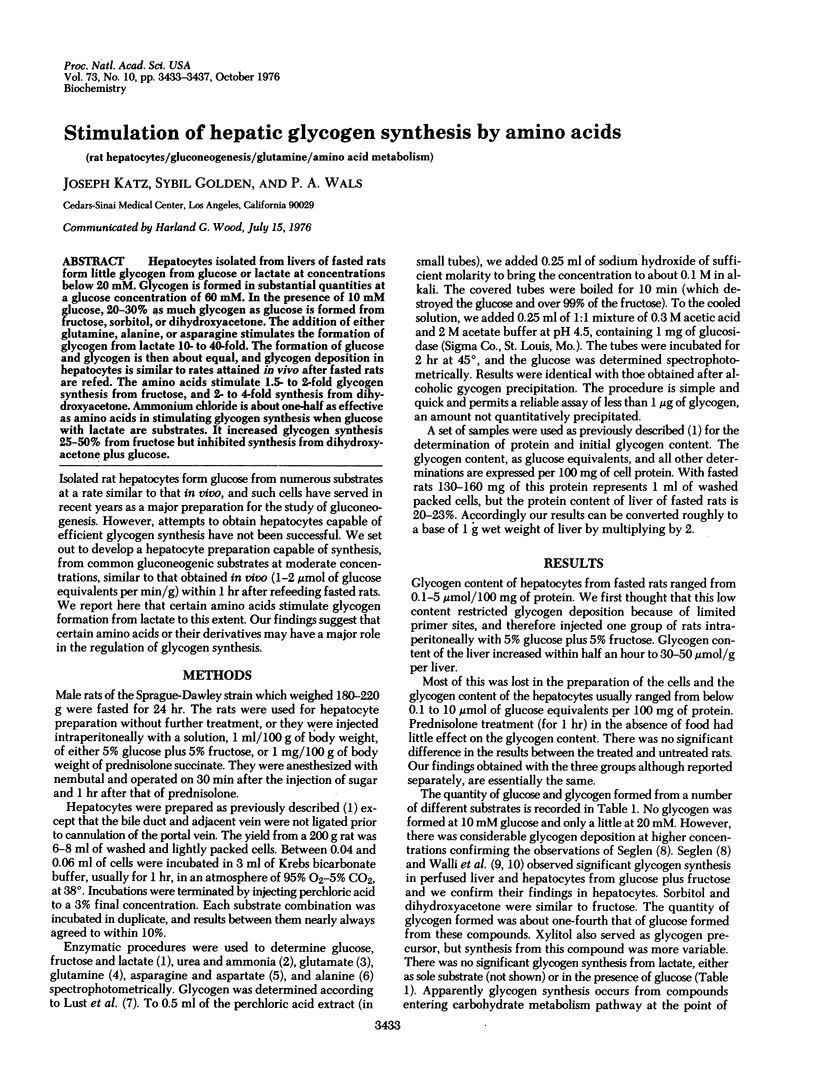
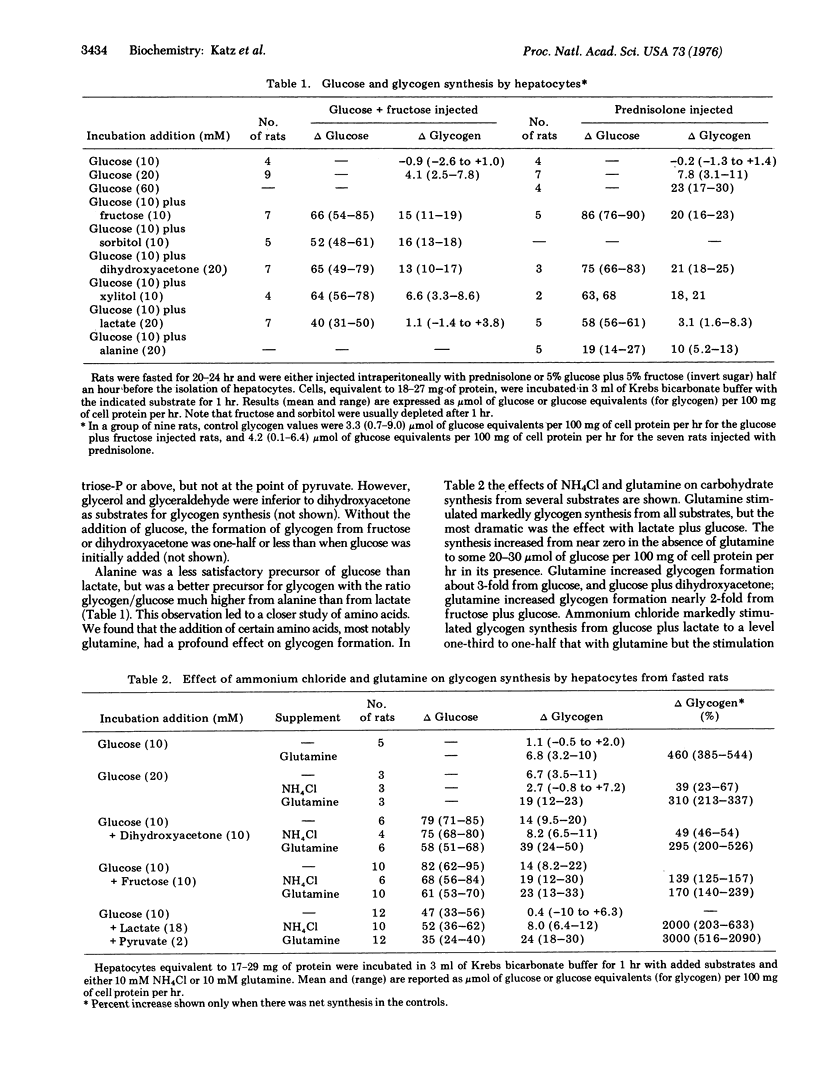
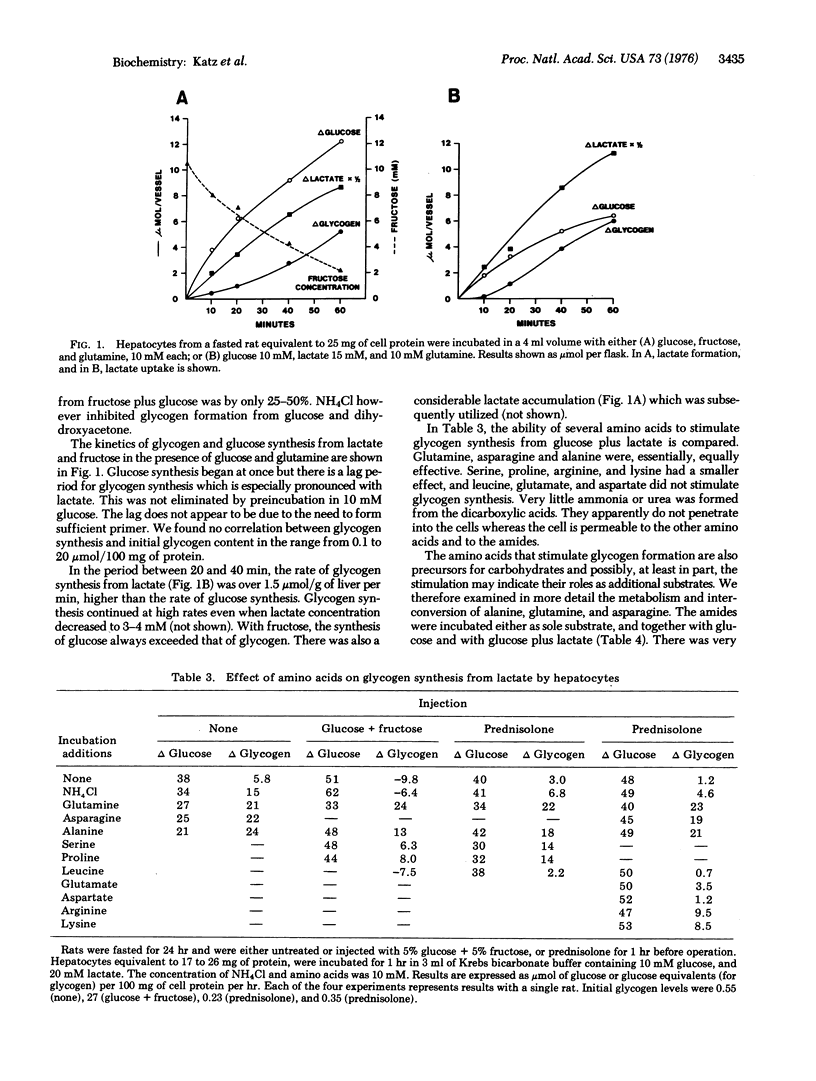
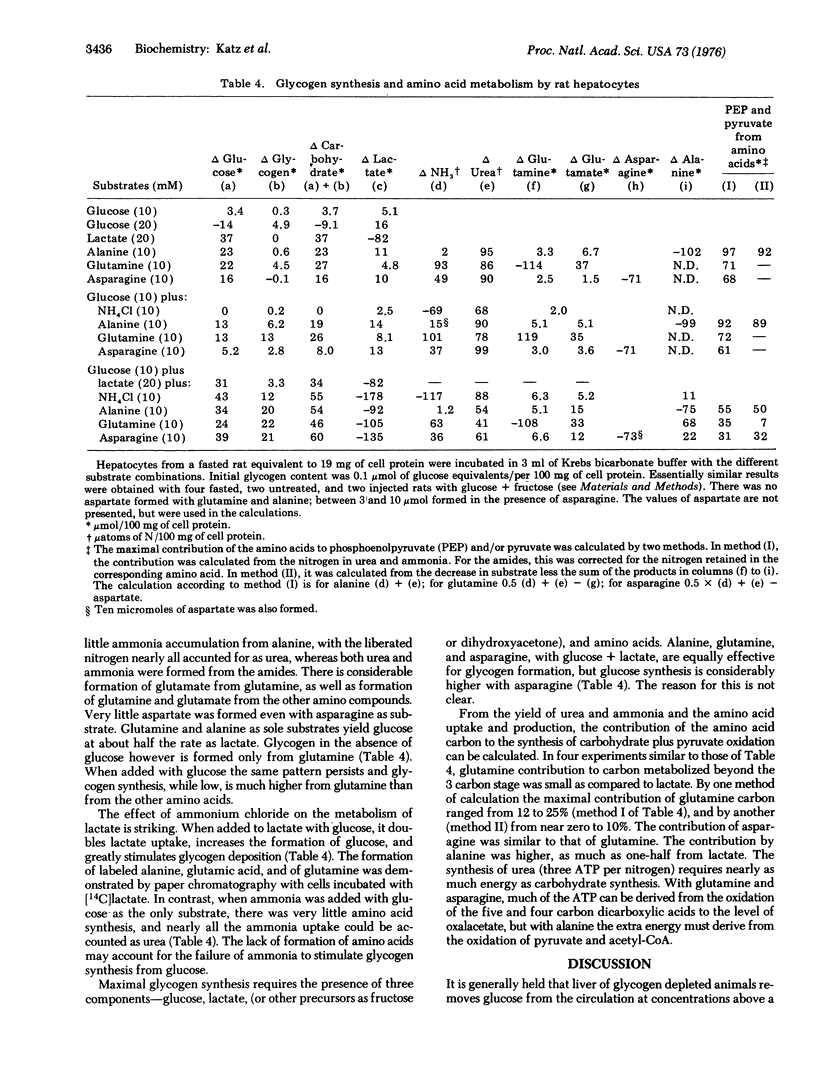
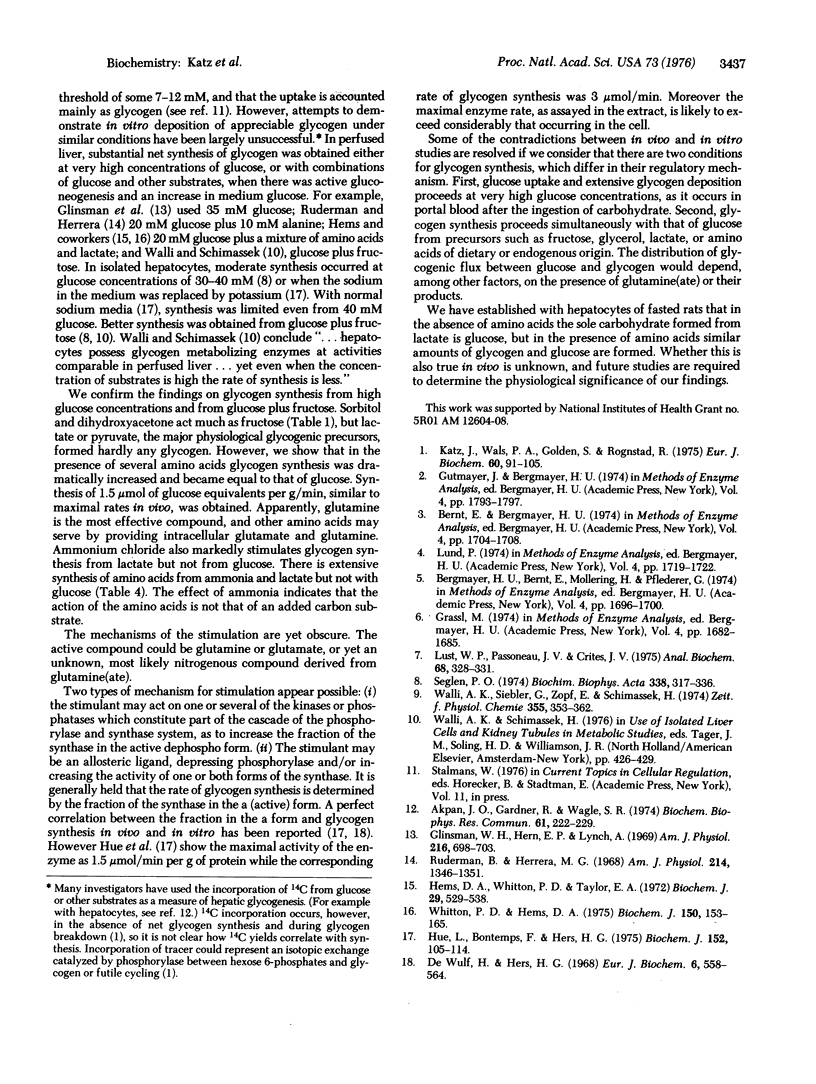
Selected References
These references are in PubMed. This may not be the complete list of references from this article.
- Akpan J. O., Gardner R., Wagle S. R. Studies on the effects of insulin and acetylcholine on activation of glycogen synthase and on glycogenesis in hepatocytes. Biochem Biophys Res Commun. 1974 Nov 6;61(1):222–229. doi: 10.1016/0006-291x(74)90556-7. [DOI] [PubMed] [Google Scholar]
- Glinsmann W. H., Hern E. P., Lynch A. Intrinsic regulation of glucose output by rat liver. Am J Physiol. 1969 Apr;216(4):698–703. doi: 10.1152/ajplegacy.1969.216.4.698. [DOI] [PubMed] [Google Scholar]
- Hems D. A., Whitton P. D., Taylor E. A. Glycogen synthesis in the perfused liver of the starved rat. Biochem J. 1972 Sep;129(3):529–538. doi: 10.1042/bj1290529. [DOI] [PMC free article] [PubMed] [Google Scholar]
- Hue L., Bontemps F., Hers H. The effects of glucose and of potassium ions on the interconversion of the two forms of glycogen phosphorylase and of glycogen synthetase in isolated rat liver preparations. Biochem J. 1975 Oct;152(1):105–114. doi: 10.1042/bj1520105. [DOI] [PMC free article] [PubMed] [Google Scholar]
- Katz J., Wals P. A., Golden S., Rognstad R. Recycling of glucose by rat hepatocytes. Eur J Biochem. 1975 Dec 1;60(1):91–101. doi: 10.1111/j.1432-1033.1975.tb20979.x. [DOI] [PubMed] [Google Scholar]
- Lust W. D., Passonneau J. V., Crites S. K. The measurement of glycogen in tissues by amylo-alpha-1,4-alpha-1,6-glucosidase after the destruction of preexisting glucose. Anal Biochem. 1975 Sep;68(1):328–331. doi: 10.1016/0003-2697(75)90712-5. [DOI] [PubMed] [Google Scholar]
- Ruderman N. B., Herrera M. G. Glucose regulation of hepatic gluconeogenesis. Am J Physiol. 1968 Jun;214(6):1346–1351. doi: 10.1152/ajplegacy.1968.214.6.1346. [DOI] [PubMed] [Google Scholar]
- Walli A. K., Siebler G., Zepf E., Schimassek H. Glycogen metabolism in isolated perfused rat liver. Hoppe Seylers Z Physiol Chem. 1974 Mar;355(3):353–362. doi: 10.1515/bchm2.1974.355.1.353. [DOI] [PubMed] [Google Scholar]
- Whitton P. D., Hems D. A. Glycogen synthesis in the perfused liver of streptozotocin-diabetic rats. Biochem J. 1975 Aug;150(2):153–165. doi: 10.1042/bj1500153. [DOI] [PMC free article] [PubMed] [Google Scholar]
- de Wulf H., Hers H. G. The role of glucose, glucagon and glucocorticoids in the regulation of liver glycogen synthesis. Eur J Biochem. 1968 Dec 5;6(4):558–564. doi: 10.1111/j.1432-1033.1968.tb00481.x. [DOI] [PubMed] [Google Scholar]


